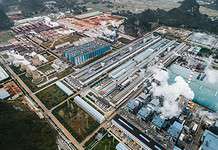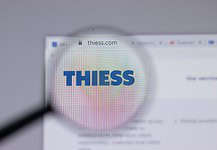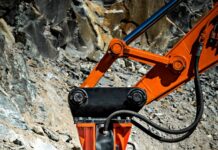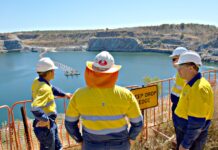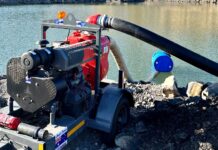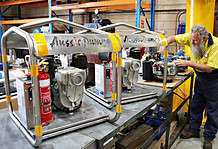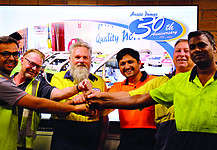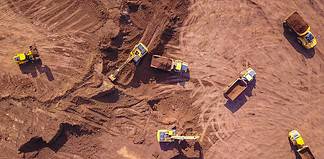NOT all 3D scanners are the same, and not all marketing material can be taken at face value when selecting the right 3D scanner for the job.
That is why it is important for any business to ensure they receive expert advice and guidance when it comes to the selection of scanners.
It is important to look beyond the marketing brochures, hype and aesthetics of design in order to assess the functionality and purpose of a scanner.
Before purchasing a scanner, businesses should always request demonstrations to see the device in action, and they should obtain scan data from their own objects to compare scanners and software processing to establish a base for comparison.
Ideally, a full-service scan job is the best possible way to test a scanner.
This allows for full workflow results and time taken, rather than a test or demo.
As one of Australia’s first 3D scanner providers and operators, Qubic has the knowledge, the experience and the range to supply businesses with industry-leading advice and first-class service.
Qubic can provide complete solutions for hardware and software that can integrate with existing customer software, and can provide scan services to benchmark and compare scanners prior to purchase which ensures the solution works.
Qubic director Ben Tam spoke with the Australian Mining Review about some of the pit falls of uninformed scanner selection and has provided a hardware and software review for readers to make more discerning choices.
Marketing sells products, not facts
Often, the specifications in marketing material won’t tell the full story, as it will claim accuracy stats based on best-case scenarios and not take into account the ever-varying field conditions.
Manufacturers use different test methods, especially for terrestrial scanners, and the overall accuracy deteriorates when scans are built that are larger than the instant field of view of a scanner.
The error per meter is often greater than that claimed in the marketing material.
Noise levels in handheld scanners are not usually stated in specifications, meaning that high noise levels often result in poor resolution for the final scan and negates high-resolution specifications.
When presenting screen shots of 3D capabilities, marketing material often show point clouds to make images sharp and clean, further hiding the noise and other issues with the scan data. Meshing data is the best way to assess scan quality.
Tracking and self-alignment of handheld scanners can be done in a number of ways.
Scanners can use shape or graphic/texture contrasts to self-align, or target stickers – black and white photogrammetry dots – can be used (preferably on flat surfaces as target stickers on curved surfaces can introduce additional errors).
It is important to note, however, that regardless of the alignment method, overall error will increase as larger areas are scanned.

What scanner for what job?
Terrestrial scanners are ideal for large zones and site scans where the accuracy of 1mm over a zone larger than 3m is required.
That could be conveyor sections, full-size trucks and trays or crusher and transfer chutes.
Often using a combination of scanners is the best way to achieve effective results.
By using large, terrestrial scanners for bigger zones and the handheld models on smaller zones, large amounts of detail and complex areas can be captured faster and more accurately.
Mr Tam said that there is no one-size-fits-all approach to scanners, and that each scanner has its own strengths and weaknesses.
“One scanner can’t do everything and guarantee accuracy,” he said.
“Qubic can tailor the ideal in-house scanning combination and even bring in external specialists.
“We would really encourage anyone to come in store, or at least contact us to discuss what they need from scanners and we can provide at a bare minimum some guidance and advice.
“It’s so important to look beyond the marketing material.”
Artec scanners
These scanners have fast software and can obtain high-resolution data with ease.
Both the software and the scanners can produce full colour 3D images for sales and marketing materials.
The software can import 3D data from CAD or other scanners in order to work with Artec scans.
The Artec Leo is the most portable Artec scanner: it does not require a computer for scanning, and the onboard screen means there are no cords needed to give cable-free scanning.
This allows users to maintain three points of contact at all times when climbing on equipment, and the resolution and accuracy is suitable for metal fabrication, wear analysis and brown space visualisation.
The Artec EVA is a medium-resolution scanner with a one-metre range and 60cm-deep scanning, and is ideal for fast, textured and accurate 3D models of medium-sized objects.
The Artec Space Spider is a high-resolution scanner that is perfect for capturing the fine details of components such as bolt threads and small machined parts.
All of the Artec scanners can be used in conjunction with one another to obtain the best results, and many mine operators and mine services have used the Artec scanners, such as Westrac, Harness Master Wiring Systems, WYSIWYG 3D, and many others.
Surphaser engineering grade terrestrial scanners
Surphaser scanners will give the highest level of accuracy and the lowest noise of any terrestrial scanner on the market.
It is used by both Airbus and Boeing because of its accuracy and resolution in comparison to survey-grade scanners.
It comes in various models from 2.5m to 140m range, and it is suitable for wear analysis and reverse engineering of large items with sub-millimetre accuracy.
Surphaser has also rebranded one model as the Artec Ray for use directly inside the Artec software.
A walk while you scan mobile system called SurphSLAM is also available. The SurphSLAM software was developed by CSIRO. – allowing operators to walk while they scan and cover large volumes quickly.
Geomagic DesignX software
This reverse engineering software is the most comprehensive on the market.
It can combine history-based CAD with 3D scan data processing to create feature-based, editable solid models compatible with existing CAD.
The software outputs history-based models directly to Solidworks, Inveontor, NX and Creo.
Geomagic ControlX
This is a professional metrology software that lets you capture and process the data from 3D scanners and other devices to measure, understand, and communicate inspection results to ensure quality everywhere.
Mesh2Surface
Mesh2Surface is an affordable solution for cost-effective reverse engineering.
It can convert most scanned objects into professional CAD models and extract geometric features with best-fit algorithms, draw 3D sketches directly onto reference mesh and build surfaces.

Coastal Engineering – a case study
Coastal Engineering and Belting (CEB) is a diversified manufacturing business located on the North West coast of Tasmania.
The company services a wide range of industries but specialises in hard rock mining and the wider mining support infrastructure with customers countrywide.
After consultation and taking the company’s requirements into consideration, Qubic recommended the Artec Ray scanner.
The company has been operating for six months with huge benefits seen in accuracy of quoting and reduction in rework on site.
An accurate 3D scan can be referenced later for any number of extra dimensions that the estimator may have neglected to run a tape measure over on site, cutting out any repeat visits and ensuring that quantities can be as close as possible allowing for a competitive quote.
The ability of the scanner to capture irregular geometry accurately is also making previously unfeasible jobs accessible to CEB.
Modifications to existing pipework such as the crossover install pictured would have been a nightmare to accurately measure angles and flange orientations by hand and re-work would have been almost guaranteed but with the scanner, new components can be drawn up which will accurately bolt up to the existing flanges.
Another example of this accuracy is a scrubber (pictured) which was duplicated with accuracy to the degree that the complete and painted new assembly was able to be dropped straight in onto the same concrete anchors that had held down the old unit.
This almost total elimination of on-site rework results in significant savings.
CEB provides a wide variety of service parts and wear consumables for various mining equipment.
Downtime on this equipment is costly to the operator, so if CEB is able to offer a component – such as rebuild parts for the bucket pictured – that are guaranteed to fit first time, the company wasable to save its customers time and money too.
For CEB, understanding of the capabilities of the technology has opened up applications that hadn’t been anticipated when the decision was made to purchase the scanner.
As an example, CEB was contracted to complete a scan of an underground mining truck that had been involved in a significant collision to check that the frame was still straight prior to money being spent on replacement parts.
In a similar vein, the scanner is able to be used in a QA application.
During assembly, if something isn’t fitting up correctly in a complex weldment, a quick scan overlaid with the original 3D model quickly identifies where the as built component deviates from the design.
More information:
Phone: (02) 9043 3205
Email: [email protected]
Website: www.qubic.com.au




